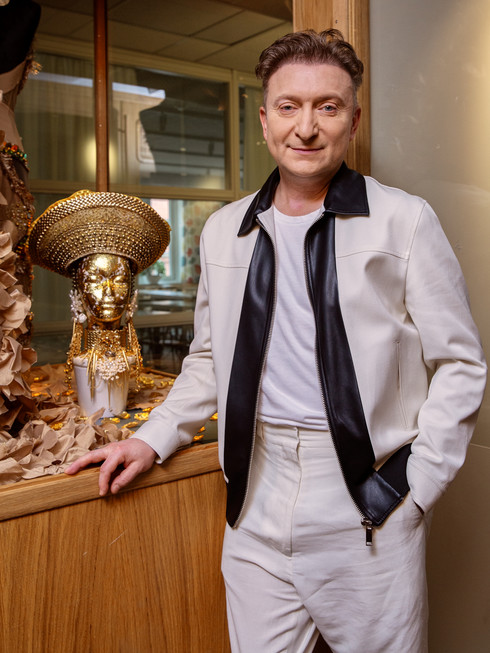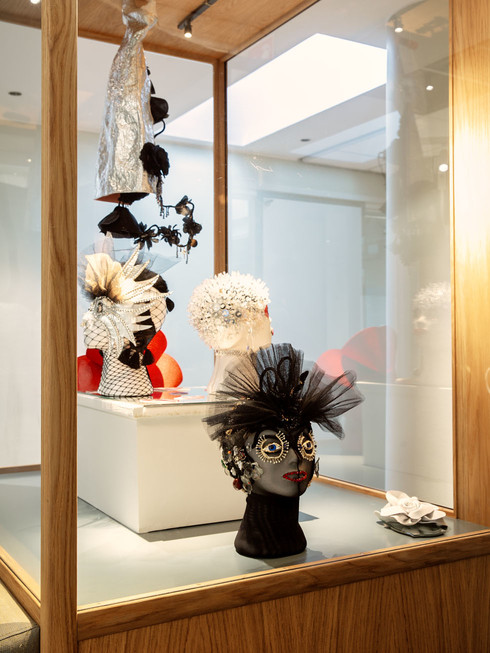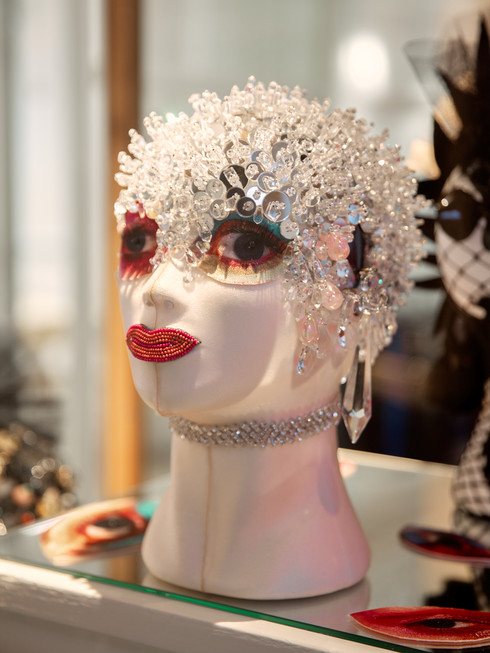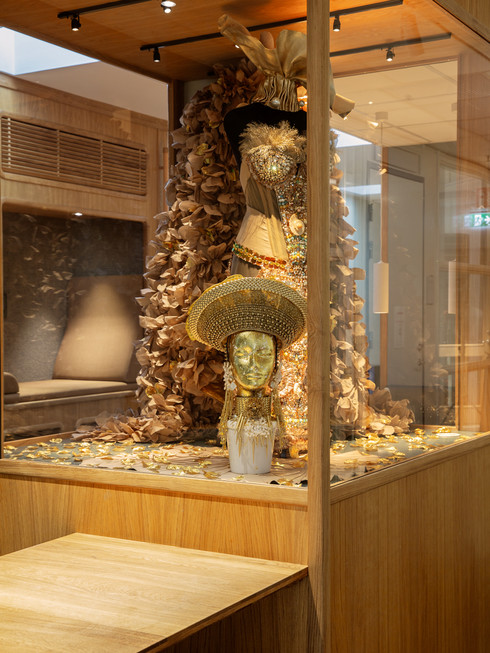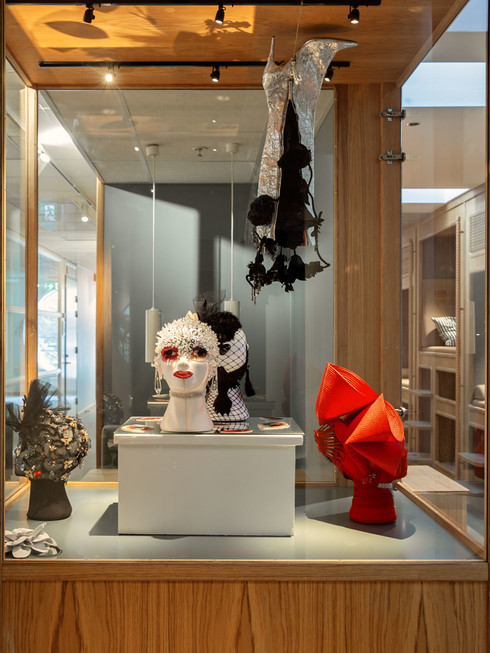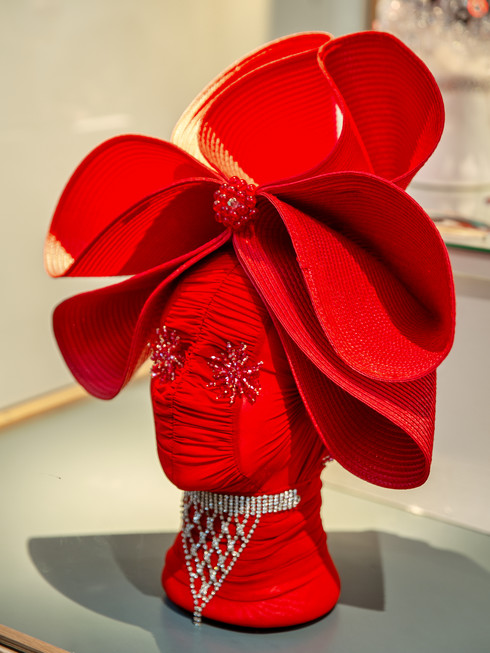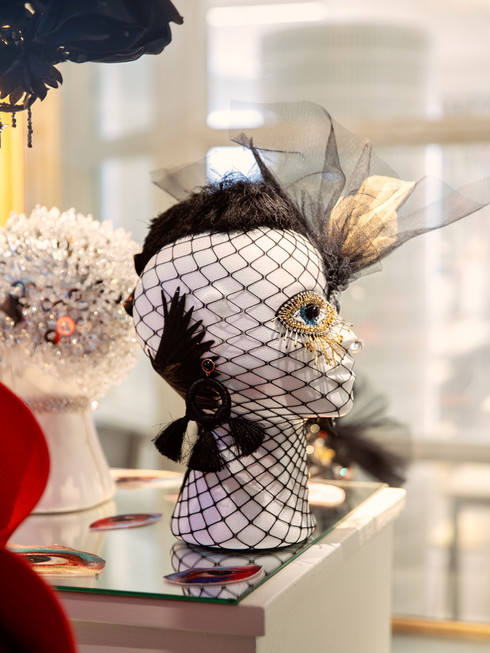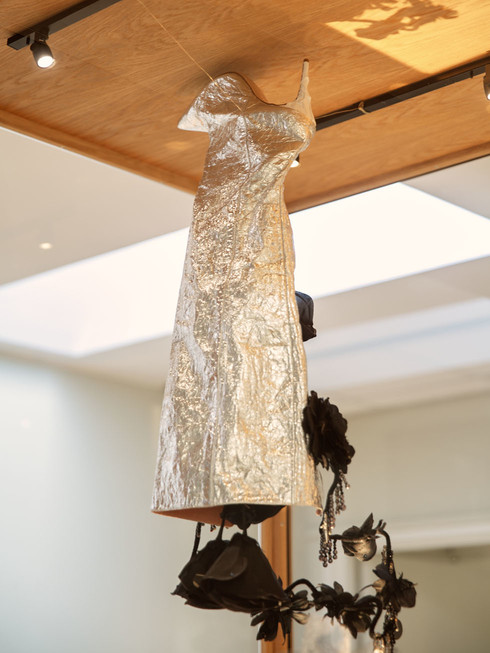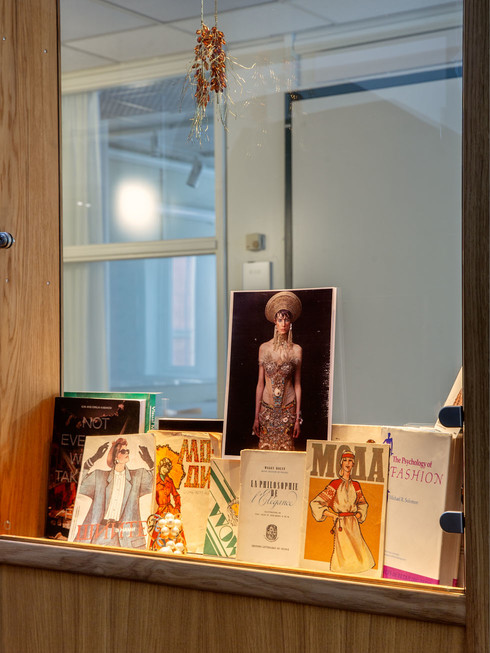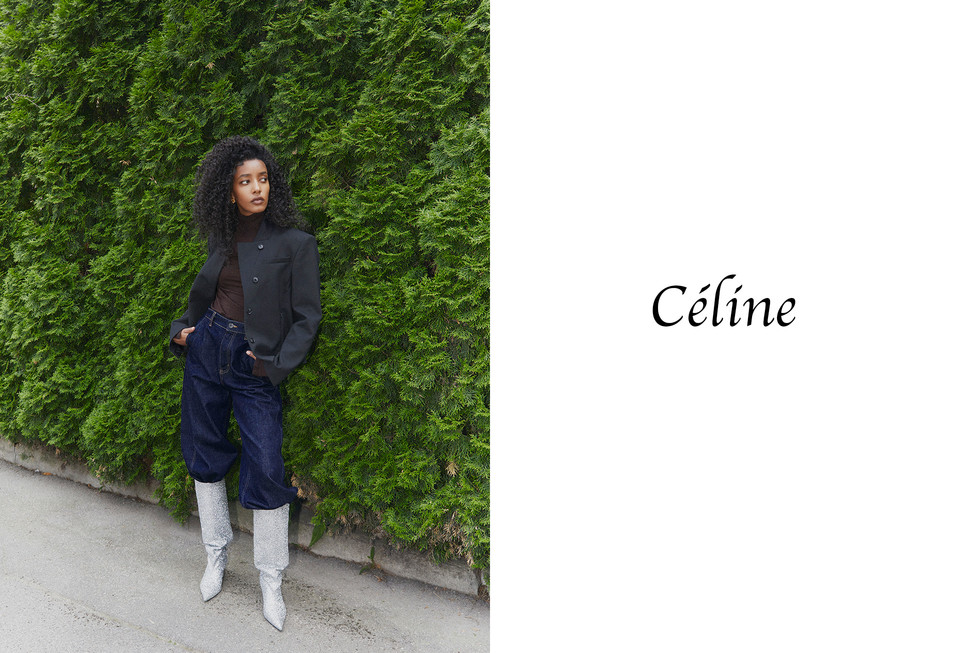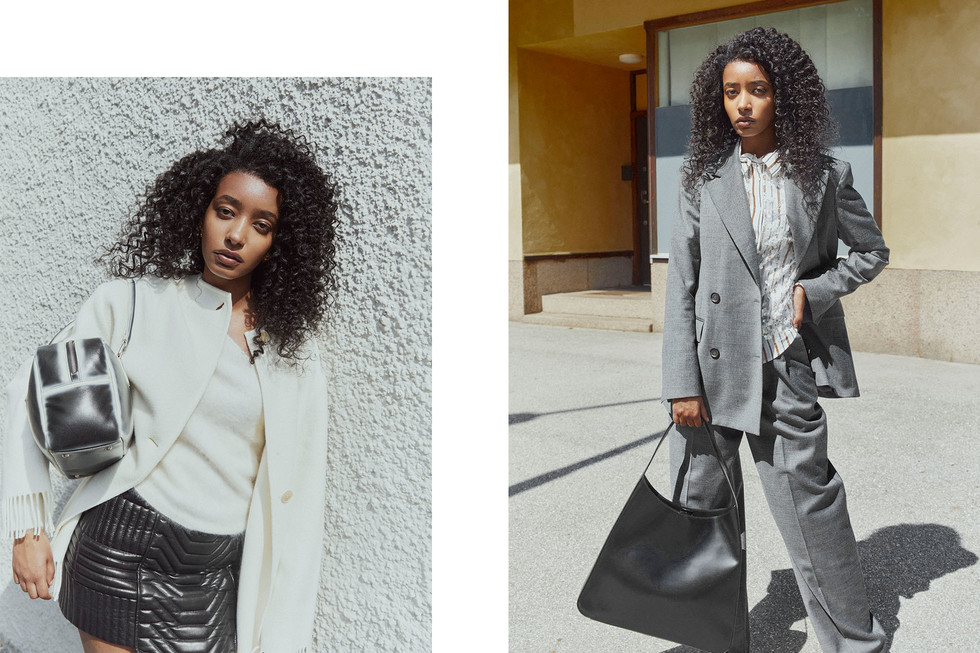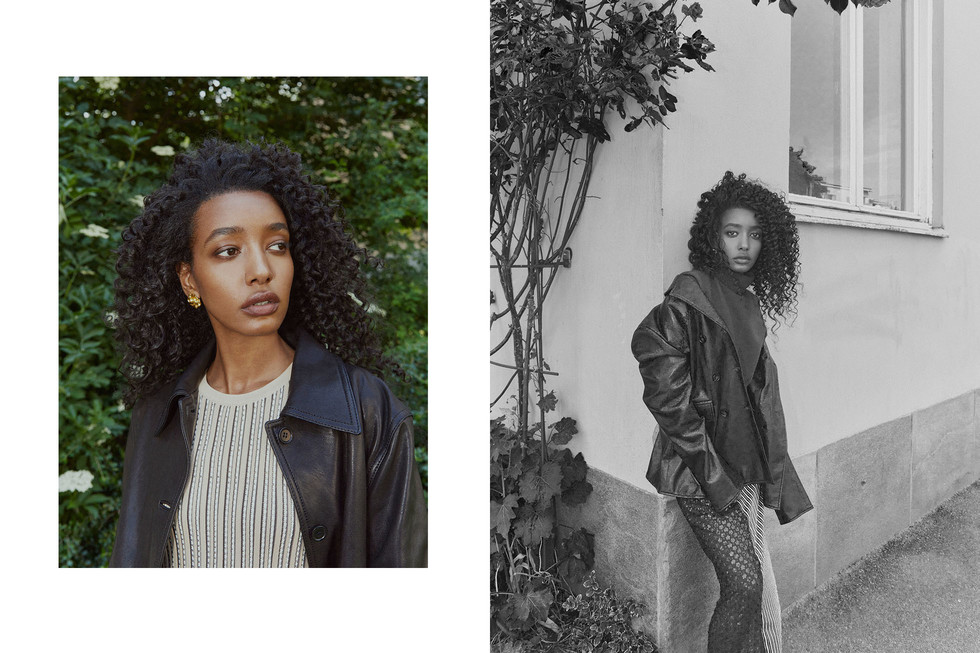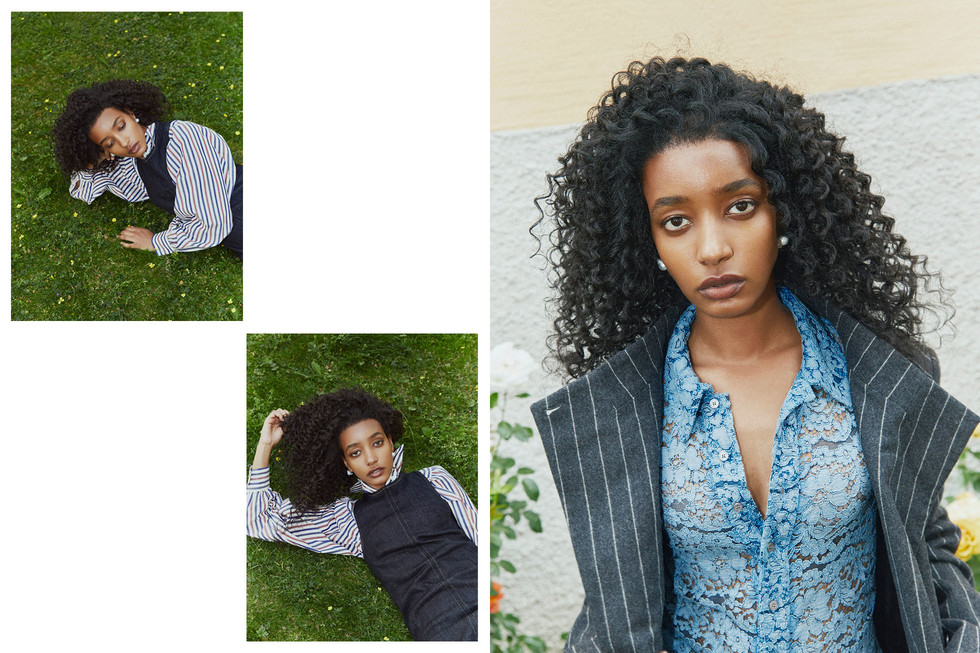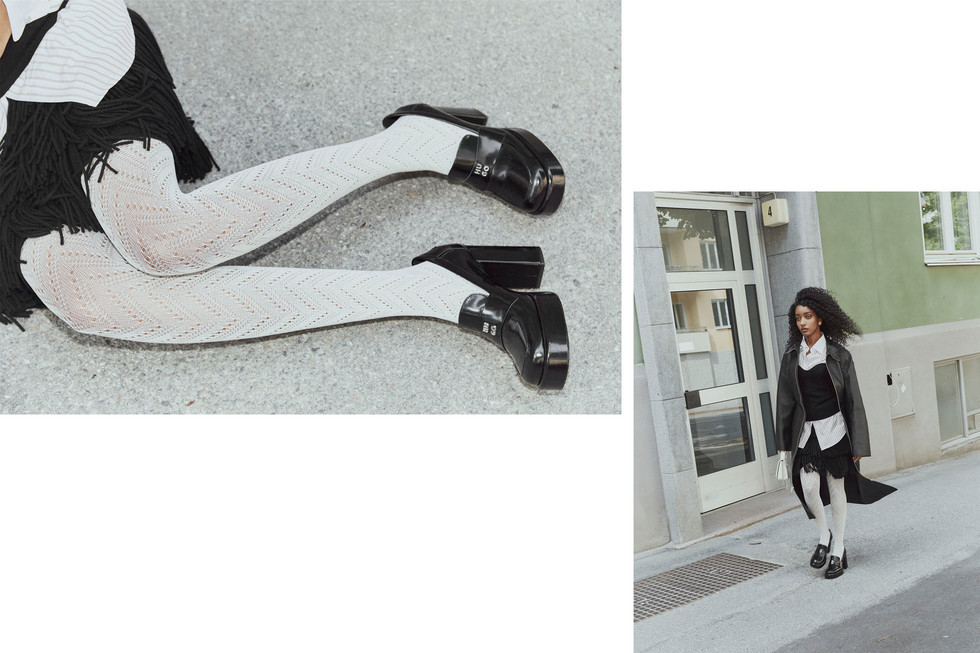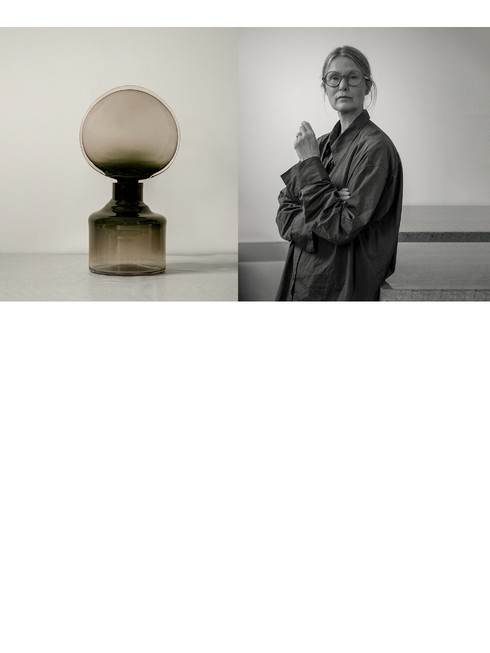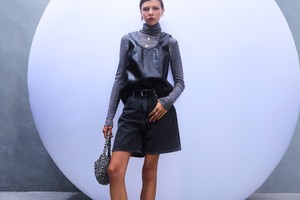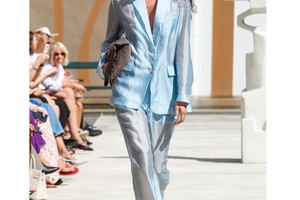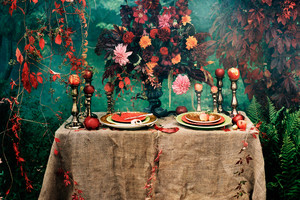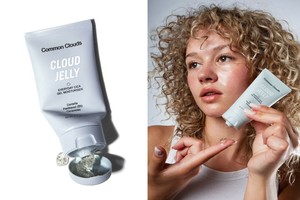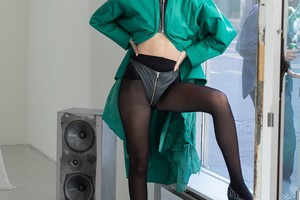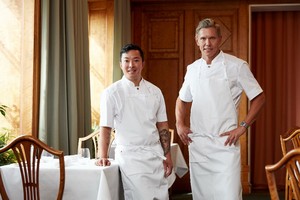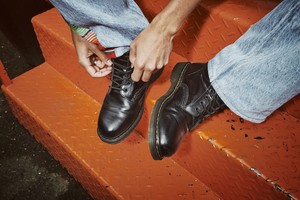The Man Who Speaks the Language of Dress: A Story of Art, Fashion, and Sustainability by Pavlo Blinov, Sweden/Ukraine
Written by Aleksandra Mikhailova and Ksenia Rundin by Sandra MyhrbergAt the Center for Retailing, Stockholm School of Economics, Ukrainian-Swedish artist and artisan Pavlo Blinov is introducing a new installation that fosters dialogue at the intersection of art, business, and sustainability. Through the Retail Art Program (RAP), an initiative by Professor Pierre Guillet de Monthoux to bridge the world of contemporary art with retailing, marketing, and consumer studies, a new conversation is emerging—one that connects aesthetic vision with business education, and through the new exhibition—sustainability.
“The Man Who Speaks the Language of Dress” is an eclectic and symbolic exhibition co-curated with Odalisque Magazine and its Editor in Chief Sandra Myhrberg behind the camera lens. Pavlo Blinov’s installation is created using discarded everyday materials, which, when combined with his artistic vision, are brought back to life with new meaning, all while telling a deeply personal story. The installation therefore reflects not only on art and fashion but also on communication—revealing how fashion, sustainability practices, and craftsmanship can intersect to tell deeper stories, not only about human experiences but also brand identities.
Pavlo Blinov, renowned for his work in costume design and scenography at the Royal Dramatic Theatre and the Royal Swedish Opera, brings his unique vision to this installation. “The Man Who Speaks the Language of Dress” draws inspiration from Ukrainian-born artist Ilya Kabakov and his concept of ‘total installation,’ where space and objects come together to create an immersive experience. Similarly, for Pavlo, dress becomes more than just a visual element: it is a space—a canvas—that reflects the world’s inconsistencies and imperfections as revealed through the artist's sublime perspective.
The Orante: Transforming a Childhood Memory
The centerpiece of the installation, “The Orante,”; features a finely crafted costume that includes a dress, a cape, and a halo-shaped headdress, which suggests a sacred symbolism while conveying a deeper personal meaning.
As a child, Pavlo was deeply moved by the Orante fresco in Kyiv's Saint Sophia Cathedral, which depicts Saint Sophia in a pleading pose, surrounded by a gilded divine background. That memory has followed him into adulthood, and now, through this installation, Pavlo offers his own interpretation of the Orante. He reimagines the original androgynous figure, not merely as a religious symbol, but as a timeless expression of hope and veneration. Through his work, Pavlo redefines veneration as something internal—no longer an external symbol of control, but a force that protects and nurtures the human spirit. The dress becomes more than just an object; it becomes a vessel of this transformation.
Upcycling in Retail: Harnessing the Power of Art and Sustainability
In a world increasingly focused on sustainability, Pavlo Blinov’s work takes on new relevance, particularly through his practice of upcycling—the process of transforming discarded materials into something of higher value. In the art world, upcycling is more than just a trend; it’s a way to reimagine value and push the boundaries of what materials can become when viewed through a creative lens. Pavlo’s expertise in costume design and scenography is evident in how he manipulates these materials, transforming what could easily be seen as waste into art. His work on some of the biggest theatre stages in Sweden has given him a deep understanding of space and composition, a skill clearly reflected in his upcycled pieces. Each element is carefully considered, with every material chosen for its potential to be reborn into a new story.
Presented in an environment reminiscent of shopping window displays, the installation speaks not only to art enthusiasts but also to those engaged in the world of retail. It challenges us to reconsider our perception of materials and encourages to explore the intersection of arts, retailing, and sustainability. Pavlo's creative transformation of discarded materials mirrors a growing movement in the retail industry, where brands are increasingly embracing sustainability through upcycling in visual merchandising. Traditionally window displays, often created for short-term campaigns, contribute to waste when they are dismantled and discarded after use. However, some forward-thinking brands are changing this narrative by incorporating upcycling into their window display designs.
Brands like Dior, Aesop, Selfridges, and Anthropologie often turn to production remnants, scraps, and repurposed materials to craft unique, sustainable displays that not only showcase creativity but also communicate their sustainabile values to consumers. In Sweden, Nordiska Kompaniet (NK) is known for its innovative use of upcycling and recycling practices in its iconic Christmas window displays, offering a local example of how sustainable values can not only coexist with, but also stimulate creativity and artistic vision. Through upcycling and his unique immersive approach to dress, Pavlo invites the public to engage not only with the materials and spaces but also with the deeper meanings behind them. In a world driven by consumption, this installation reminds us of the power of transformation— unlocking potential in what we already own and creating value from what others overlook. It is about the stories we tell and the future we envision.
As Pavlo Blinov’s installation connects art, retailing, and sustainability, it mirrors the very conversation that the Retail Art Program aims to inspire: one where creativity, artistic vision, responsibility and business acumen come together to reimagine the spaces we inhabit, the resourses we use, and the stories we tell.

